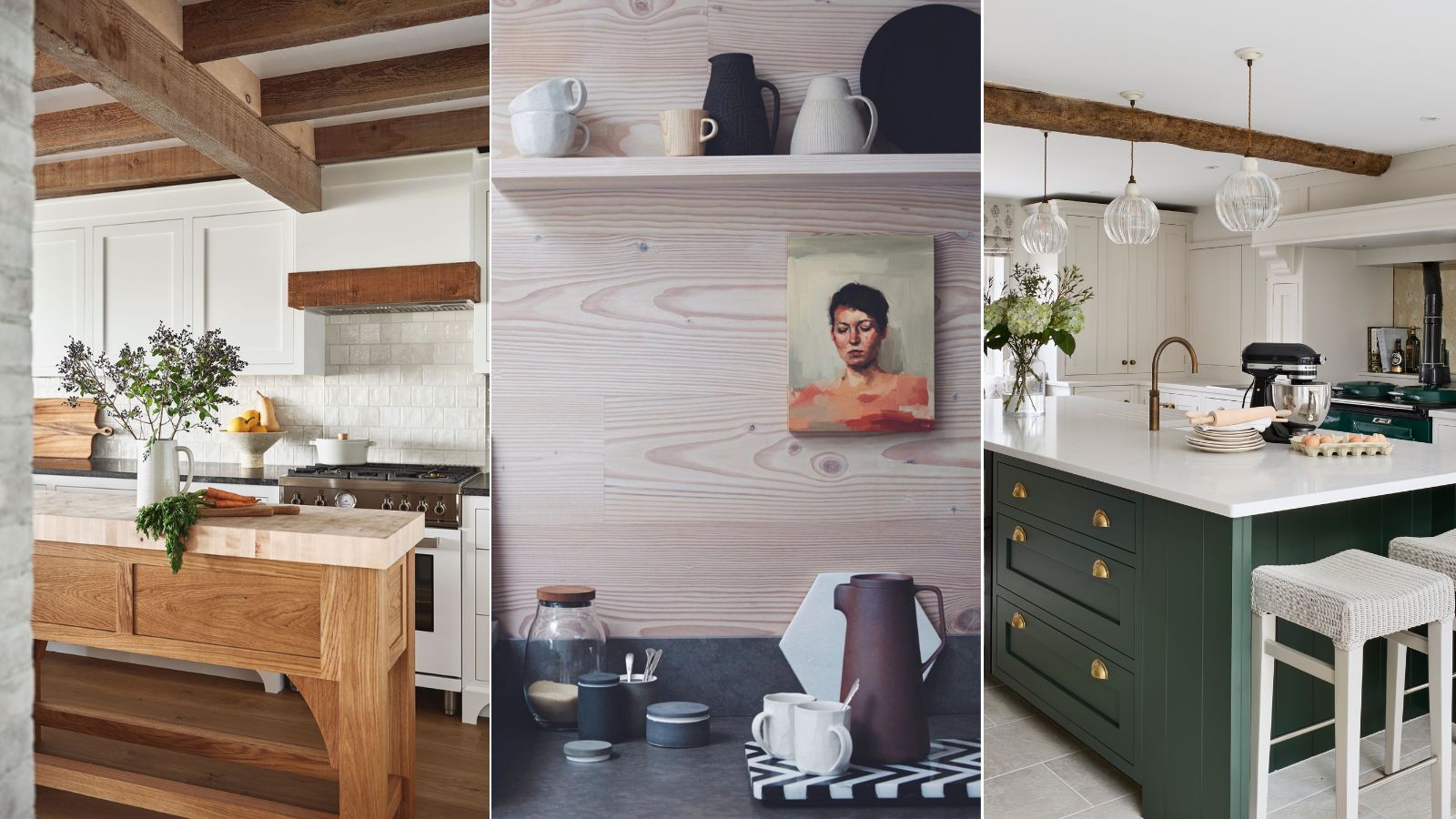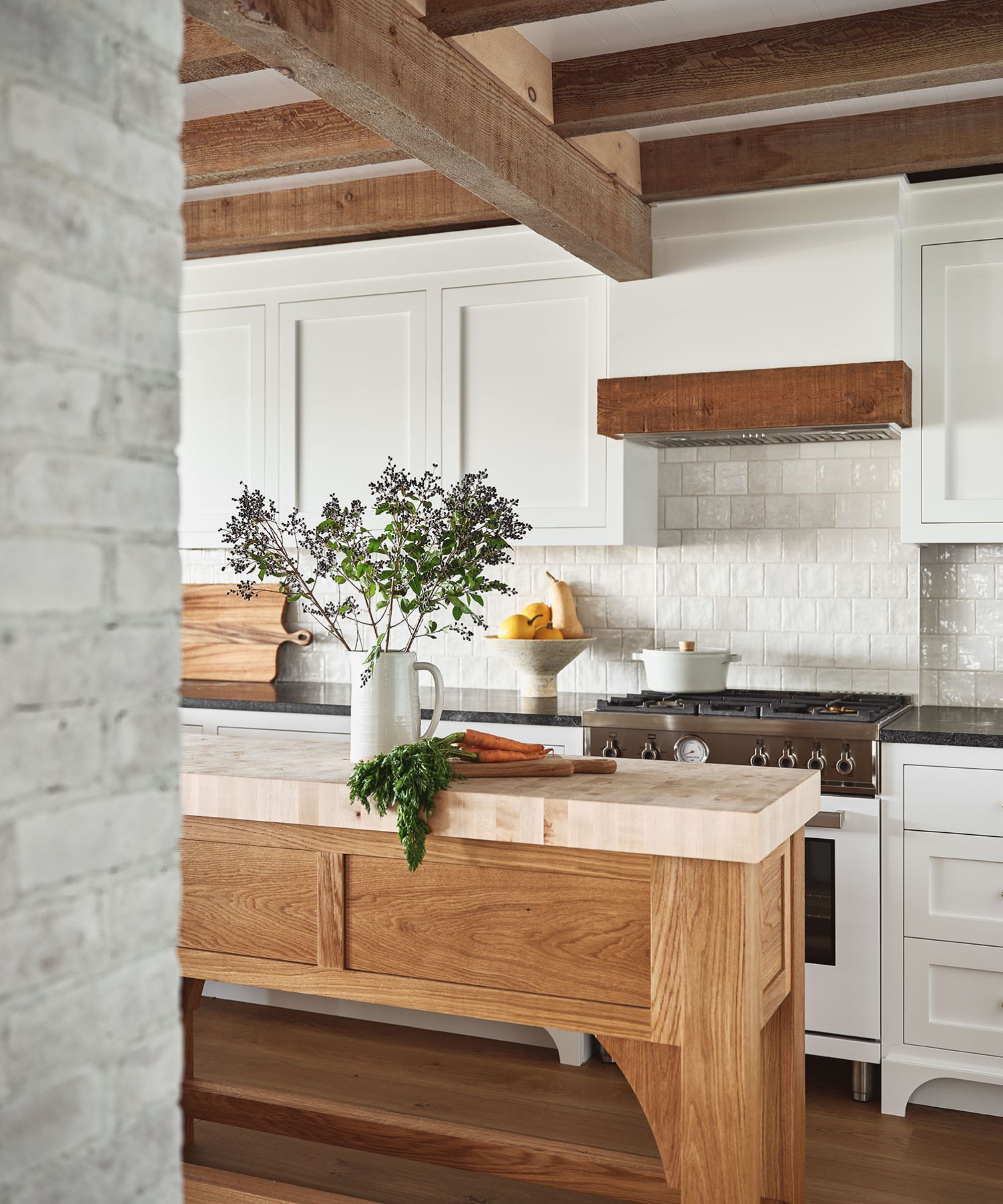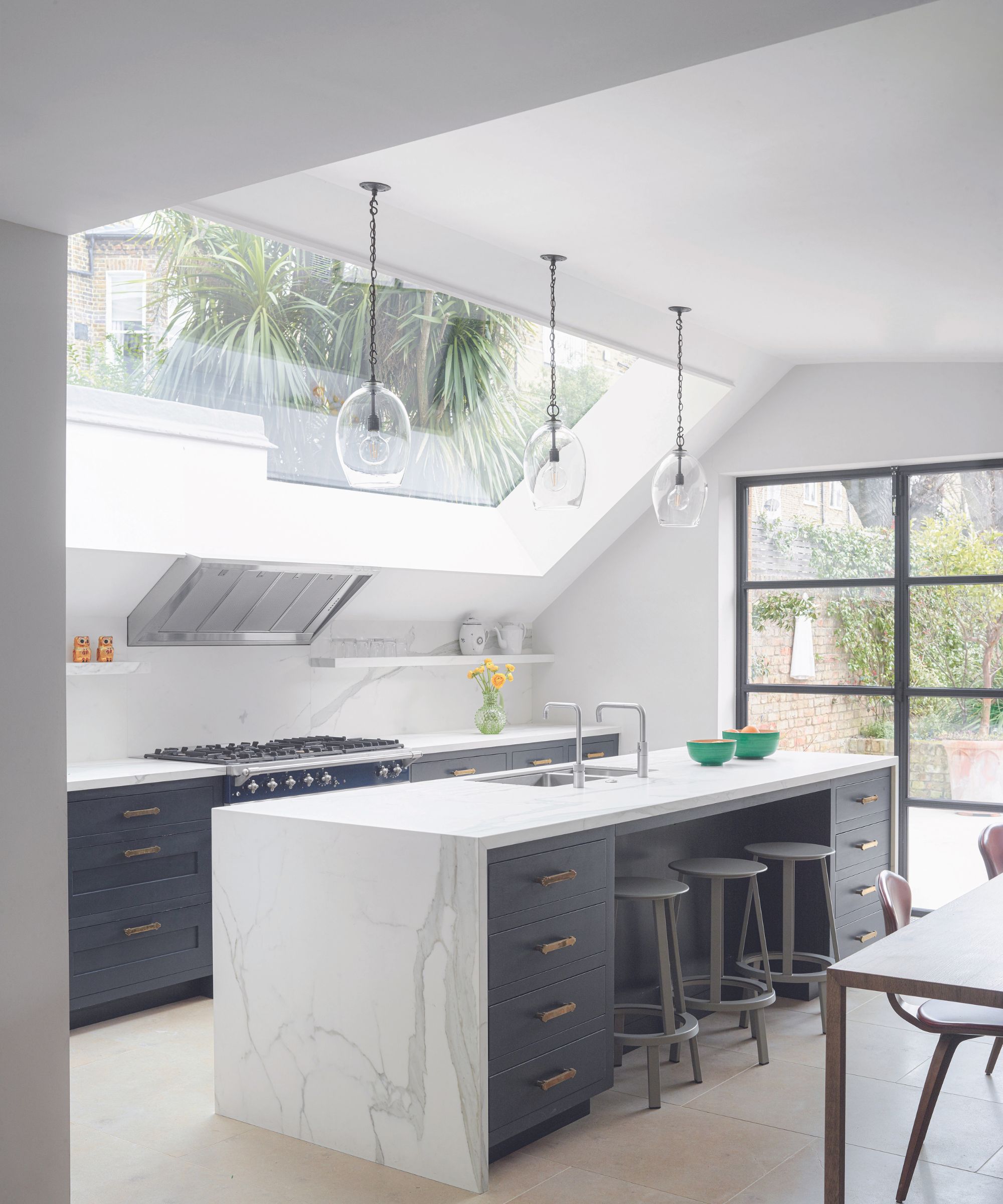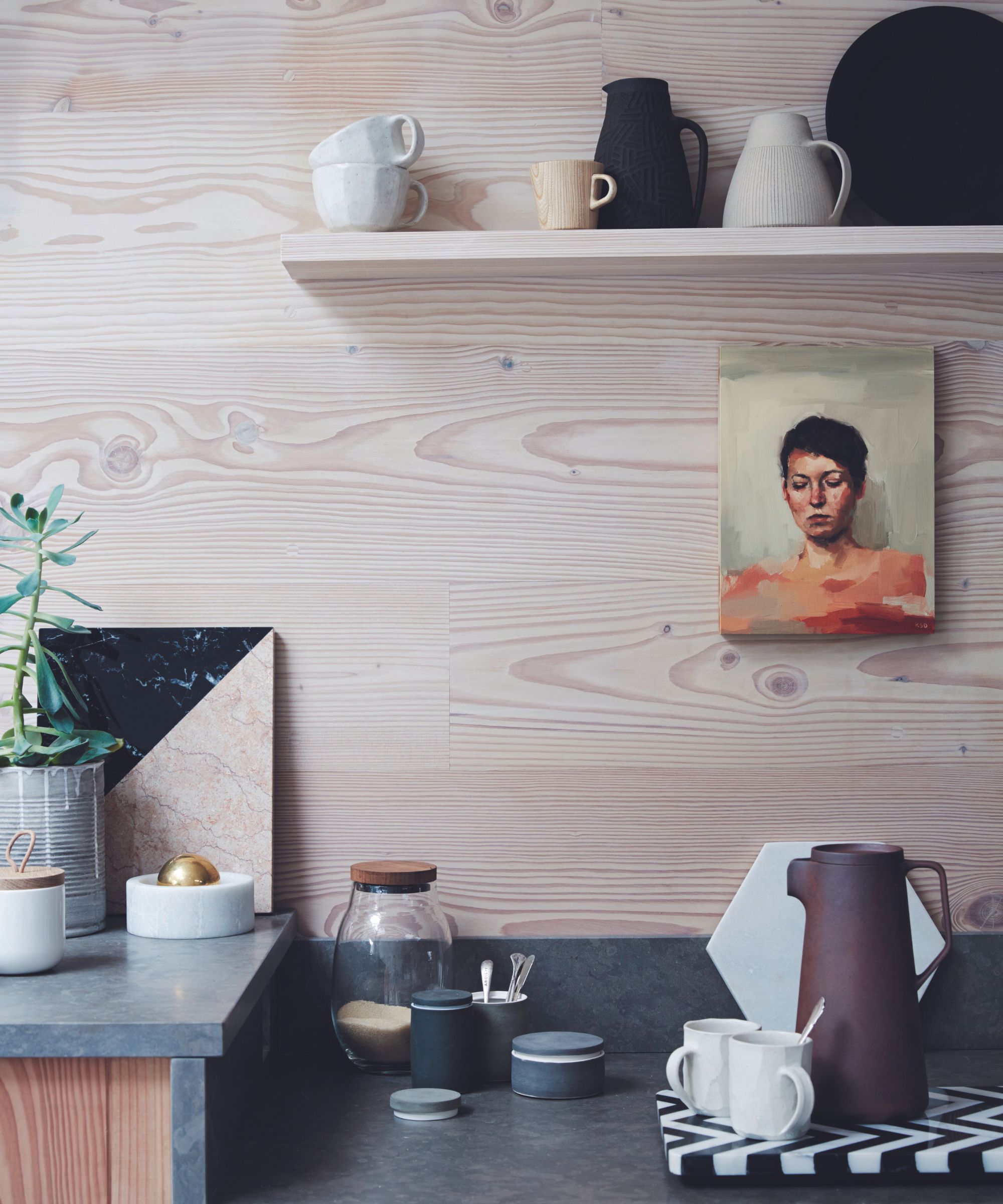What's the difference between American and British kitchens? Designers from both sides of the pond explain
These are the key features that differ between the two types of culinary spaces, according to American and British interior designers


Although every home is undeniably unique, American and British interior design styles are set apart by a handful of defining characteristics. And while subtle clues can be found in just about every space, certain rooms reveal these differences more than others.
The difference between British and American interior styles can be seen quite clearly in the kitchen, where the chosen aesthetic influences everything from storage to natural lighting. Though the styles have slowly blended as our world has become more interconnected, certain qualities still stand out as distinctly one or the other.
To get a better sense of what sets the two kitchen styles apart, we spoke with American and British interior designers, who shared the top eight differences they've seen. Here's what they had to say.
8 differences between American and British kitchens, according to designers
American kitchens vary vastly in style, as do those in the United Kingdom. And while this variety cannot be ignored, several characteristics set the greater groups apart. These are the nine differences that designers say define the two kitchen styles.
1. Layout

Though American homes aren't always larger than those in Britain, English kitchens tend to be more compact and function-forward. With more historic buildings, British kitchens often offer a master class in smart storage and form-follows-function design.
Audrey Scheck, interior designer and founder of Austin, Texas-based Audrey Scheck Design, says that British kitchens 'maximize every inch of space in their typically smaller confines.'
'[In British kitchens], you’ll often find a compact, efficient layout with everything within easy reach. American kitchens tend to be more spacious, with open floor plans that seamlessly flow into the living or dining area. They’re often oriented for entertaining, and feature expansive countertops and islands for meal prep and socializing,' she says.
Design expertise in your inbox – from inspiring decorating ideas and beautiful celebrity homes to practical gardening advice and shopping round-ups.
From open plan kitchens to open storage, American spaces tend to take advantage of their more spacious environments, and the kitchen often blends into the rest of the home. A combined dining room or living room (or both) allows the entire home to flow together, and entertainment and hosting in this space naturally follows.
2. Atmosphere

Layout is one of many contributing factors to the overall atmosphere and aesthetic of both British and American kitchens. Mike Whitfield – head of sales at Lusso, a luxury homeware brand based in the UK – says when it comes to aesthetics, 'there are firm favorites in both the UK and the US.
'Neutral colors and natural materials are popular in both countries. However, differences arise in the sources of inspiration. In the US, mid-century modern kitchens and boho styles are favored. In the UK, more traditional farmhouse style and cottagecore touches are seen more frequently,' he says.
And while there are absolutely farmhouse kitchen ideas in the US and sleek, modern kitchen ideas in the UK, these general trends have influenced homes over decades of interior design. The feeling of these spaces differs, too.
'UK kitchens can seem more eclectic and imperfect which makes them feel warm and informal. Whereas US kitchens feel very clean and seamlessly curated,' says Mike.
Kimberly Bevan, interior designer and founder of Bevan Interiors, grew up in the UK but now designs spaces in New York City and the Catskills. She takes inspiration from her upbringing in the English countryside while curating homes for American clients. And Kimberly agrees that this 'eclectic' design sense alters the experience of living in the space.
'Growing up in England, I remember kitchens in British homes felt less like kitchens and more like a second living room in the sense that the finishes did not scream "kitchen,"' she says.
3. Appliances

In part due to size and layout, the appliances found in American versus British kitchens differ as well. And while it comes down to more than just brand names, Kimberly says that one specific appliance stands out to her as characteristically European.
'When I think of British kitchens, I immediately think of AGA ranges with constant radiant heat which can warm the whole room. Equipped with a warming drawer they also provide a good place to warm socks and gloves on a cold day,' she says.
Borderline-imposing AGA range cookers truly define a space, and they can often be found stealing the show in British kitchens. But aside from a quality range cooker, British kitchens tend to stay away from large or eye-catching appliances.
'In the UK, kitchens typically have smaller appliances due to space constraints. US kitchens have more to play with and often feature larger appliances, including fridges with ice makers and water dispensers, oversized ranges or cooktops, and larger-capacity dishwashers,' says Mike.
From dishwashers to countertop toasters, American kitchens tend to feature more, and more varied, appliances throughout the space. And though Mike says the extra space offers lots of room to play and experiment with appliances, he adds that attention must still be paid to how these appliances fit in with the overall aesthetic.
4. Storage

'Instead of built-in cabinetry and predictable center islands, as we have grown accustomed to in American kitchens, British kitchen storage is more discrete,' says Kimberly.
Both for functional and aesthetic purposes, British kitchen designs have much more stowed away, rather than out in the open. Kimberly says hutches or sideboards often substitute for 'long rows of cabinetry,' and butcher blocks or kitchen tables take the place of kitchen islands. Plus, 'the range doubles as not only a place to cook but to also gather around to warm up,' she adds.
Mike agrees, saying that 'smart storage solutions' like 'pull-out shelves, tall pantry cabinets and corner storage units' are popular in British kitchens since 'space efficiency is a priority.'
But these conventions are beginning to change, says Kimberly. While kitchen islands are moving from the US to the UK in droves, she says that typically British storage solutions are beginning to crop up more and more in the US. An added benefit of this shift? The interior design possibilities within a pantry space, she says.
'Traditionally an English staple, pantry rooms are becoming very popular in American homes and are a great opportunity for wallpaper or painting the room a bold color as small rooms can have a personality unique from the rest of the home,' says Kimberly.
5. Design

'British kitchens have a certain charm which can be hard to find anywhere else in the world. This is especially true of period properties; kitchens in these houses tend to be bespoke, and when done well, they can marry a traditional aesthetic with high-end, luxe finishes for a beautiful eclectic style,' says Mike.
Bespoke English kitchens are iconic for their timeless designs and thoughtful planning. The effort that's put into handmade cabinetry and considered design, tailor-made for each individual space, lasts forever. And the intangible quality this thought lends to a space makes British kitchens undeniably unique.
Richard Davonport managing director at Davonport Kitchens – a bespoke kitchen furniture brand based in the UK – says that this attention to detail informs many of the design features that make a British kitchen stand out.
“In Britain, bespoke kitchen tends to veer on the side of classic and timeless, with preferences for woods – especially at the moment – hand-painted cabinets and worktops such as marble, granite, and quartz,' says Richard.
On the other hand, American kitchens bring their own appeal, leaning toward more modern kitchen finishes 'such as glossy cabinets and stainless steel,' he says: 'However, in recent years, there has definitely been a blurring of lines, as gloss is back in fashion and so is stainless steel, so America is importing its kitchen trends into the UK,' adds Richard.
6. Lighting

When it comes to kitchen lighting ideas, American kitchens tend to have more to work with. And though those living in Midwestern states or on the East Coast might disagree, Mike says that many US states 'have the luxury of great weather,' making indoor-outdoor designs easier to achieve. He says that the 'option of floor-to-ceiling access to the garden' is 'perfect for family life,' but it isn't always possible in British buildings.
'Lighting in UK kitchens can be hard to get right. Natural light can’t always be relied upon and whilst you need bright lighting for food preparation, it still needs to be a liveable space. Finding the right balance of lighting is a challenge which can infringe upon the style of British kitchens,' he says.
And even though American kitchens on the whole benefit from more natural lighting, Kimberly says that their lighting is slowly getting more creative. She sees American kitchens catching up with British kitchens' considered lighting schemes that have compensated for lack of natural light.
'Instead of a row of matching pendant lights over an island, I am more often incorporating table lamps along with one-off pendants over a butcher's block or kitchen table,' she says.
7. Drink stations

The need for caffeine is universal, but the UK's love of tea just isn't reflected in the states – and this difference is apparent in many kitchens. Over time, the British drink station has migrated over to the US, and America seems to be having a coffee station moment – inspired by, but not identical to, British design.
'Having a pot of tea or coffee always on the ready feels very British, which is inspiring designated coffee bars in American kitchens. These coffee bars are an area in the kitchen dedicated to making cups of brew at any time of the day,' says Kimberly.
Richard says that drink stations, and specifically kettles, are 'classic British elements' that end up 'high on the list of what everyone would love to one day have.'
'This includes the classic and iconic AGA, and also our love of kettles. While hot taps have definitely risen in popularity, for most of us, the kettle is a stalwart of our kitchens, even if we have a coffee machine as well. Americans don’t quite have the same fascination with cups of tea, and so coffee and coffee machines will nearly always feature in their kitchens,' he says.
8. Shelving

Open or floating kitchen shelving is a defining feature of classic British kitchens, and Kimberly says this look has started to make its way to the US. Organizing open shelving in a kitchen lets plates and mugs coexist alongside 'objects unrelated to the kitchen,' contributing to the collected, lived-in look many British kitchens evoke.
'I love seeing artwork, books, mirrors, and other collectibles alongside everyday kitchen items. Incorporating these elements really makes the room feel cozy and loved,' says Kimberly.
Similarly, plates are often hung on the wall as decoration in British kitchens rather than being hidden away in china cabinets. Pots and pans can often be seen hanging from the ceiling or the wall, and convenient bars are often installed on the wall to make for kitchen utensil storage.
Although American and British kitchen design styles overlap more and more as time goes on, they each have their own character, aesthetic and feeling. If you'd like a mix of the two styles, mixing and matching is easier than ever – and we don't need a second reason to invest in an AGA.

Abby was the Interior Design News Editor at Homes & Gardens and is now studying for her Master's degree in Journalism at City University, London. Prior to joining our team, she worked with Better Homes & Gardens, where she wrote and edited content about home decor, gardening tips, food news, and more. She studied Journalism and English Literature at New York University and moved to London to pursue her love of writing in 2023.


